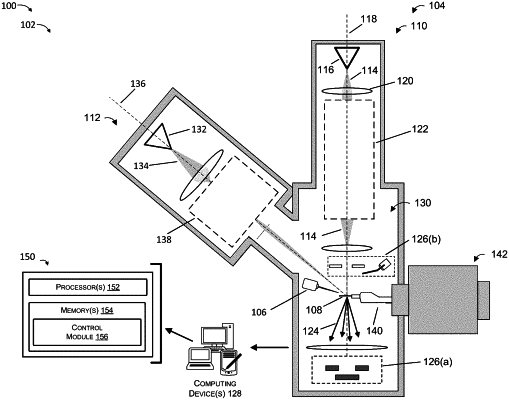| CPC H01J 37/3056 (2013.01) [H01J 37/20 (2013.01); H01J 37/244 (2013.01); H01J 37/28 (2013.01); H01J 2237/2007 (2013.01); H01J 2237/208 (2013.01); H01J 2237/31745 (2013.01); H01J 2237/31749 (2013.01)] | 14 Claims |

|
1. A method for creating attachments between a sample manipulator and a sample within a charged particle system, the method comprising:
translating a sample manipulator so that it is proximate to a sample, wherein the portion of the sample manipulator proximate to the sample is composed of a high sputter yield material; and
milling, with a charged particle beam, the high sputter yield material such that portions of the high sputter yield material is removed from the sample manipulator, and wherein at least some of the removed high sputter yield material redeposits to form an attachment between the sample manipulator and the sample,
wherein the sample manipulator comprises an intermediate body attached to a probe, wherein the intermediate body is composed of the high sputter yield material, wherein the intermediate body is attached to the probe portion of the sample manipulator by a process comprising:
translating the probe portion so that it is proximate to the intermediate body; and
milling, with the charged particle beam, portions of the intermediate body proximate to the probe,
wherein at least some of the removed intermediate body redeposits to form the attachment between the probe portion and the intermediate body, and
wherein the high sputter yield material corresponds to a rate of emission of greater than 5 atoms per ion when the high sputter yield material is irradiated with a 30 kV focused ion beam.
|